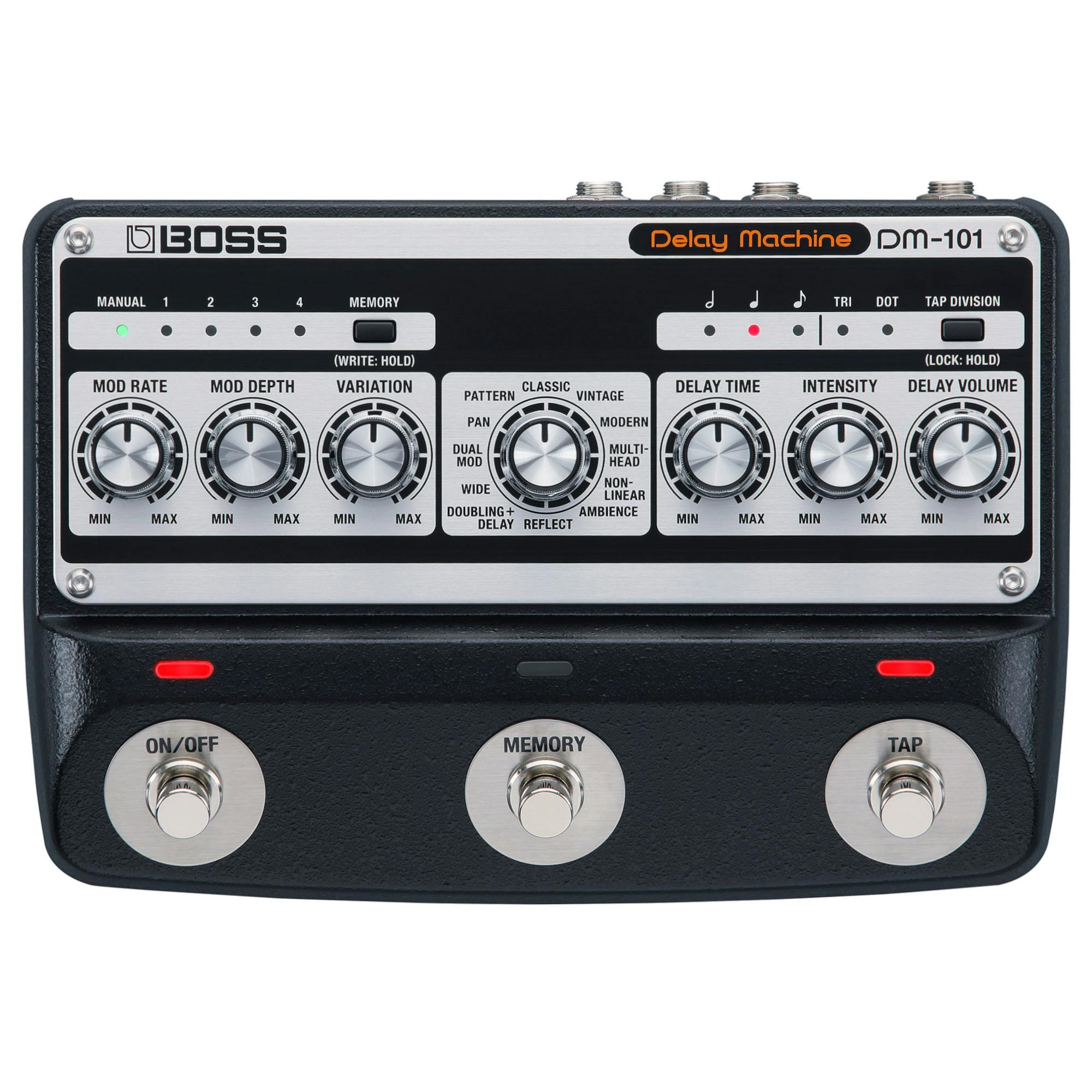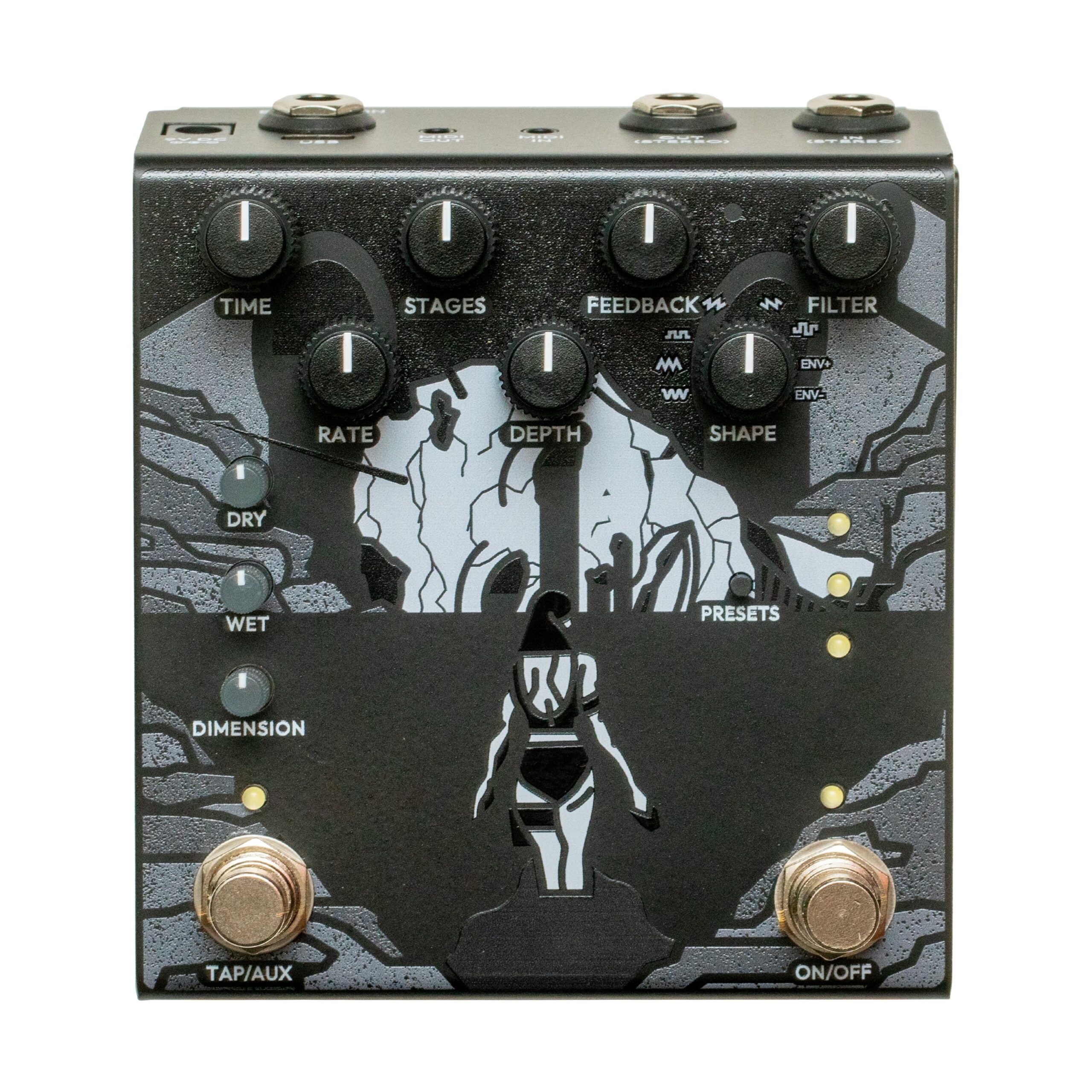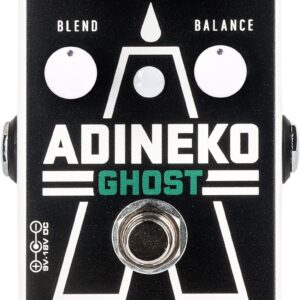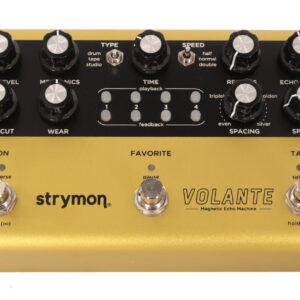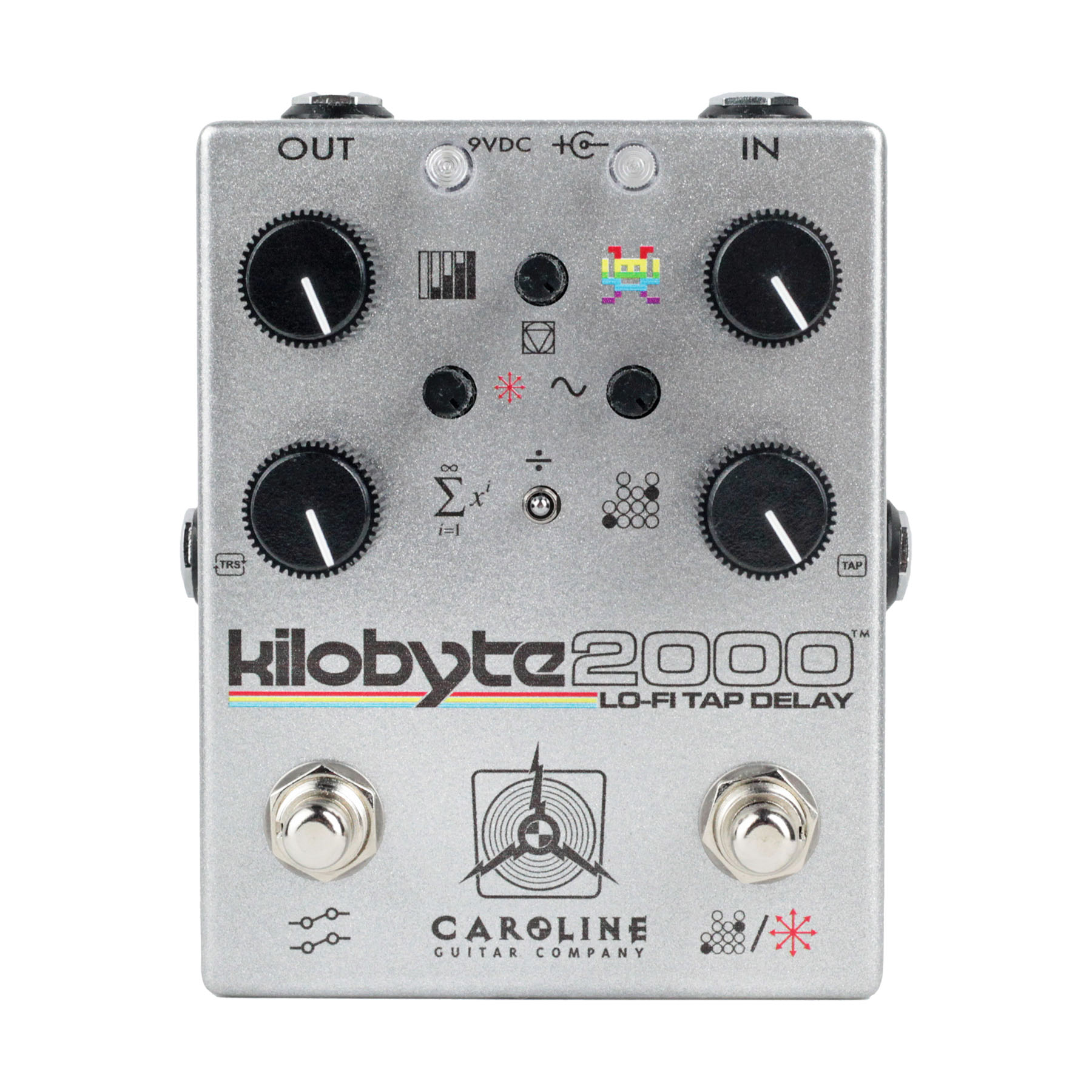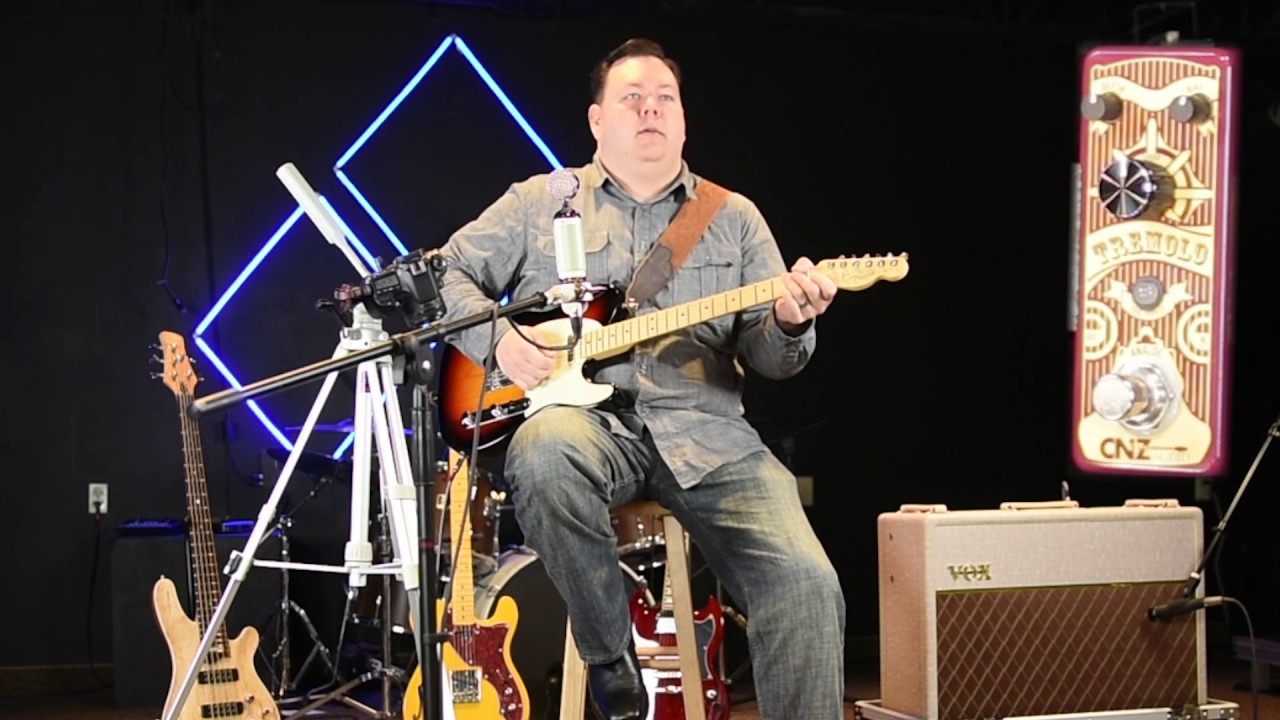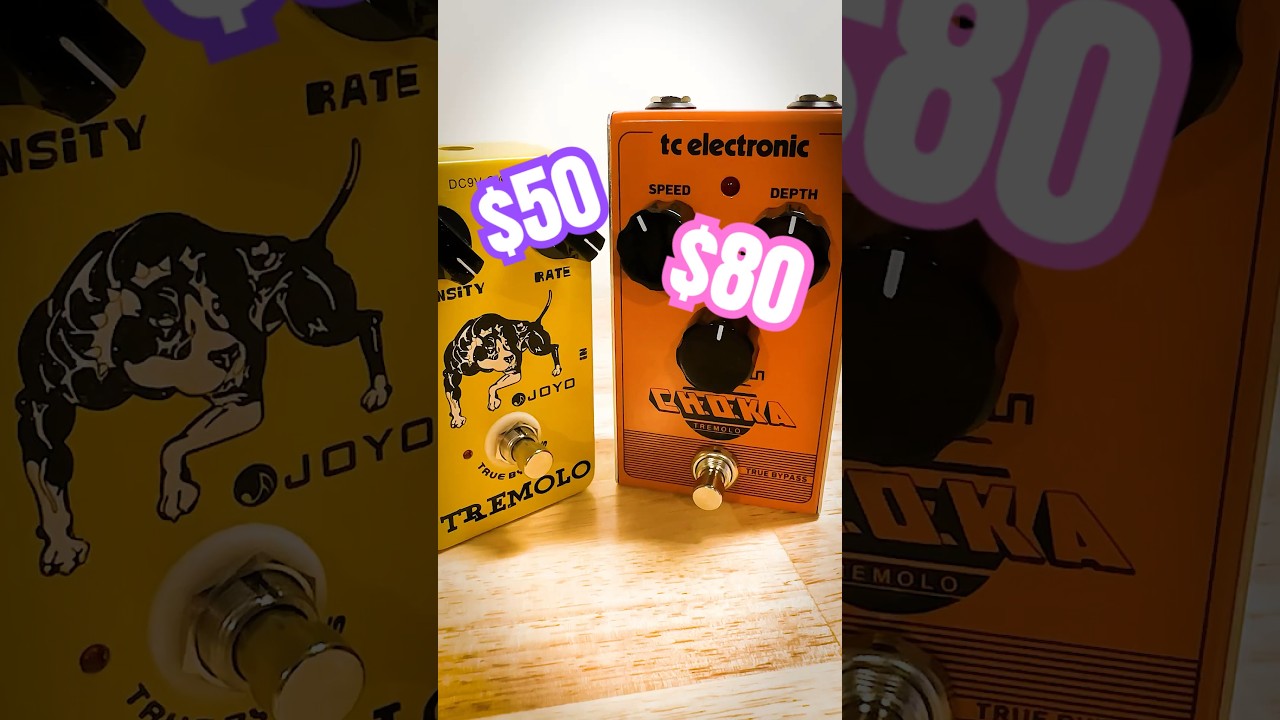Description
The Boss DM-101 Delay Machine Pedal is currently retailing at £349 and it is in stock. Available to be delivered to you by post direct (some charge may apply). The top pedal chef at Just Pedals thinks that Boss nailed it here. Boss DM-101 Delay Machine Pedal
We have new and used Boss musical equipment available on our website for fast direct delivery from sellers across the UK & Europe.
BOSS is one of the most iconic and influential effects pedal brands, renowned for its durable, compact stompboxes and industry-leading innovation. A division of Roland Corporation, BOSS has been shaping the sound of musicians since the late 1970s, offering everything from legendary overdrives like the SD-1 and DS-1 to cutting-edge digital effects like the DD-500 and RV-6. Known for their reliability, versatility, and signature buffered bypass, BOSS pedals are a staple on pedalboards worldwide, trusted by beginners and professionals alike.
A delay pedal is used to create an echo effect by repeating the original sound after a short time. It works by capturing the input signal and then replaying it with adjustable delay time and feedback. The longer the delay time and the more feedback, the more pronounced the repeating echo becomes, adding depth and space to the sound.
There are different types of delay pedals, including analogue, digital, and tape delay. Analog delay provides a warmer, more natural echo, while digital delay offers clear, precise repeats and additional features like tap tempo. Tape delay mimics the sound of vintage tape machines, adding a distinctive, slightly warbled effect. Delay pedals are widely used across genres to create atmosphere, enhance solos, or add complexity to rhythms.
Just Pedals is a new Guitar Effect Pedals Marketplace – We feature new and used Guitar Effect pedals from different sellers, to purchase online from the UK.
We checked and good news we have it in stock, it has your name on it.
Order today and we will have it with you in a jiffy !
A pedal is an electronic device that alters the sound of an electric guitar by applying various effects. Pedals are typically connected in a series between the guitar and amplifier, allowing guitarists to switch effects on and off with their feet while playing.
This enables musicians to quickly and easily change their sound, adding versatility and creativity to their performances.
Pedals are essential tools in many musical genres, including rock, blues, jazz, and metal, allowing artists to craft distinctive and dynamic soundscapes.
Once you buy one, you can't stop and then you have to sell them and buy more.
Just the latest videos
Just related products
£319.00
Classic sound meets modern power with the DM-101 Delay Machine, the ultimate analog delay. Driven by eight BBDs under smart CPU control, this inspiring pedal delivers 12 unique modes, stereo operation, and a wide array of tonal colors, all while main…
read more
£314.28
The ultimate analog delay pedal realized with advanced BOSS technology Fully analog BBD audio circuitry shaped by precision digital CPU control Warm, saturated, and highly musical tone Twelve modes deliver a wide range of mono and stereo delay textur…
read more
£268.12
Analog Delay Pedal Waza Craft Special Edition Custom mode for clear transparent delay sound Standard/classic mode with the typical warm sound (20-300 ms delay time) + Roland EV-5 expression pedal
19% Off £286.00 £232.00
Product 1: The most advanced BOSS compact series delay ever Product 1: Eleven versatile modes include basic digital delay, vintage echoes, shimmer, mod, looper, and more Product 1: Looper offers up to 40 seconds of recording time, overdub capability,…
read more
£101.39
Average Duration Delay Effect: Experience enhanced sound with an average duration delay effect that adds depth and space to your instrument's o Quick Effect Adjustment: Enjoy effortl control with a user-friendly interface for quick adjustments to you…
read more

